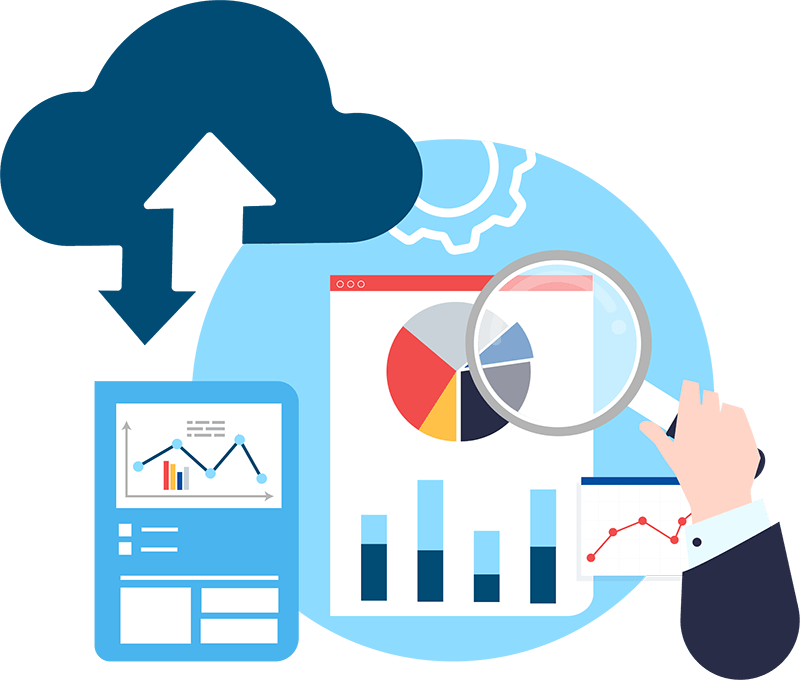
In the current business landscape, the ascent of digital transformation and the increasing adoption of cloud computing have empowered organizations to provide distinctive online services. This shift has prompted numerous companies to identify themselves as technology-driven entities. Consequently, there has been a notable upswing in technology budgets, with IT spending projected to reach $4.6 trillion in 2023, signifying a 5.5% augmentation compared to the previous year.
CEO and CFO commitment to IT investment
Today’s CEOs and CFOs understand IT services and technology’s profound impact on shaping modern businesses and providing exceptional products and customer experiences. Consequently, they are increasingly willing to invest significant resources in these areas. However, as enthusiasm for technology investment grows, there is a heightened focus on cost management, accompanied by greater expectations for Chief Information Officers (CIOs) and their IT teams to exercise strict fiscal discipline. This growing scrutiny places CIOs under mounting pressure to offer solid rationales for their expenditures and to exercise precise control over their budgets.
The imperative of IT cost management
Given this challenging business environment, the importance of IT cost management has surged. This structured process empowers CIOs and IT departments to project and maintain control over the costs associated with their organization’s technology investments. Its significance is further underscored by the universal concern for cost containment spanning diverse industries. In straightforward terms, IT leaders cannot afford the adverse consequences of escalating project costs, leading to budget overruns.
Ineffectual IT cost management practices and strategic imperatives
Within an organization’s IT department, inefficiencies in cost management can manifest in various ways. One such scenario involves investing in an advanced on-premises data center, only to realize that costs could have been significantly reduced by transitioning to cloud-based infrastructure. Alternatively, an organization might migrate all its data to a single cloud provider, only to discover prolonged periods of underutilization of its cloud resources while incurring expenses. Another common misstep is procuring costly project management software utilized by only a fraction of the workforce.
- Effective IT cost management goes beyond simply cutting expenses; it involves making informed decisions that can boost revenue and improve overall profitability.
- CIOs are shouldering more business-related responsibilities as organizations recognize the strategic importance of technology in their success.
- CIOs can strategically allocate investments to areas that promise to increase revenue over time.
- For example, transitioning to modern Customer Relationship Management (CRM) platforms, despite initial costs, can significantly enhance operational efficiency and increase sales.
- Across all aspects of their operations, organizations are actively pursuing comprehensive financial management.
- IT departments should advocate for discipline and transparency within their functions to ensure they align with the broader organizational strategy and goals.
A strategic approach to IT cost management in organizations
Organizations must adopt a well-defined IT cost management approach to efficiently pursue their objectives and ultimately achieve the necessary cost savings. Here’s a structured framework for approaching IT cost management:
Accurate cost forecasting
Gone are the days when IT initiatives could surpass budgets without consequence. Modern IT cost management demands precise cost estimation. This includes creating detailed project budgets that account for potential variances. IT budget forecasts should encompass actual costs, realistic delivery timelines, and a profound understanding of how the completed project will impact the business.
Initiate comprehensive cost analysis
IT departments should conduct a thorough cost analysis. This involves benchmarking existing expenditures to gauge the efficiency or inefficiency of current processes. It’s crucial to identify areas of unnecessary spending, pinpoint potential cost reductions, and explore adjustments to enhance the overall performance of the IT department.
Staff training and reskilling
An indirect cost is associated with IT services – the extent to which an organization’s employees utilize the technology it develops or licenses. Organizations should invest in training programs to empower employees to maximize the value of technology resources. Failure to do so may result in unused technology becoming part of the organization’s tech debt.
Establish clear objectives
Similar to other business units, CIOs need measurable metrics to evaluate their strategies. IT cost management necessitates organizations to set clear and quantifiable goals. These objectives should be closely monitored to ensure that the organization is fulfilling its commitments to its executives and stakeholders.
Identification of total cost of ownership (TCO)
Each IT technology requires a comprehensive cost analysis. This analysis provides a transparent overview of the total cost of ownership (TCO), considering IT operating costs, capital expenditures, migration expenses, server upgrades, maintenance, and other relevant considerations.
Cultural transformation
Successful IT operations amalgamate human collaboration and technology. Organizations committed to effective IT cost management must also focus on upskilling their employees and cultivating a culture prioritizing cost savings and efficiency. Employees should be encouraged to identify underutilized or unused software, devise cost reduction and efficiency enhancement strategies, and proactively address tech debt before it becomes burdensome.
Incorporating these strategic steps into IT cost management practices can help organizations streamline their IT spending, optimize resource allocation, and contribute to overall financial sustainability.
Strategies for IT-enabled cost savings
Cost optimization remains an organization’s top priority in today’s business landscape. When it comes to managing IT expenses, it’s not a matter of simply trimming services; it’s about optimizing their value. By employing the right strategies and making strategic investments, IT can play a pivotal role in reducing costs and potentially driving revenue growth or, at the very least, ensuring customer loyalty.
Automation for efficiency
Automation of IT processes can lead to substantial cost savings by reducing manual labor and enabling staff to focus on strategic tasks. Areas where automation can be applied include:
- Server provisioning: Automated processes can provision and configure servers swiftly and accurately.
- Infrastructure management: Automation tools can efficiently manage and monitor infrastructure resources.
- Software updates: Automated software update mechanisms ensure systems are always up-to-date, reducing potential security risks.
IT lifecycle and asset management for efficiency
Extending the lifecycle of software and other IT services is critical to maximizing their utility. Real-time visibility into services is crucial. Organizations should routinely assess all facets of their IT systems, gaining insights into each infrastructure component, monitoring its performance, and determining when maintenance or replacement is required.
Cloud cost optimization
Cloud expenditure has experienced an annual increase of approximately 20% to 30%. This escalation can be attributed to various factors, notably the tendency for cloud migrations to exceed their budgetary constraints and the failure of cloud transformations to achieve the expected cost reductions. Several factors contribute to the mounting cloud expenses. These include the payment for unused computing capacity, a lack of transparency in monitoring spending, and allocating funds towards additional storage for non-critical data. Organizations that migrate to the cloud but neglect to actively manage their resources tend to overspend.
Effective cloud cost management assumes paramount importance within any IT cost management initiative. This is particularly pertinent due to the anticipated growth in cloud usage, especially with the increasing adoption of artificial intelligence (AI), particularly generative AI. McKinsey has estimated that generative AI could potentially deliver an annual value increase ranging from $2.6 trillion to $4.4 trillion. It is essential to recognize that cloud costs associated with the utilization of generative AI will surge in tandem with its increased usage, over and above the expenses incurred for licensing AI models and the human oversight required for managing and curating the outcomes.
Software licensing optimization
The advent of the Software-as-a-Service (SaaS) market allows organizations to reduce their internal IT service costs by licensing technology from third-party providers. However, organizations may accumulate unnecessary or unused subscriptions over time, resulting in payments for services they no longer utilize. An effective IT cost management strategy mandates consistent software license assessments to ensure organizations only invest in solutions that deliver value exceeding their costs.
Virtualization for resource efficiency
Technology upgrades for long-term savings
Surprisingly, investing in new technology can lead to cost savings for a company. Outdated technology often accumulates technical debt, resulting from suboptimal decisions that incur future expenses. Examples include reliance on hard-coded values, applying temporary patches instead of addressing root causes, or selecting less expensive platforms lacking essential services.
Investing in new technology, despite initial costs, can enhance efficiency, facilitate the development of innovative customer solutions, and prevent costly security breaches. Ultimately, this approach boosts revenues and trims costs in the long run.
The evolving role of CIOs in managing IT costs
Within today’s organizations, the role of Chief Information Officers (CIOs) is gaining ever greater importance, accompanied by heightened expectations regarding their ability to impact the company’s financial performance positively. This dynamic underscores the vital significance of proficiently managing IT costs within their sphere of responsibility. This helps them gain insights into how IT initiatives drive revenue growth and equips them with the tools to exercise efficient control over expenditures.
CIOs who adopt a proactive and systematic approach to monitoring, analyzing, and transparently communicating the financial well-being of their IT departments will be recognized as invaluable contributors to the executive leadership team. They will wield substantial influence within their organizations, especially in an unprecedented era of technology in the company’s operations and success. As such, CIOs are poised to become indispensable strategic partners, driving value and fiscal prudence concurrently.
Summing it up
IT leaders must embrace innovative cost-saving strategies to supercharge their IT operations.
Dive into the open source solution for FinOps and cloud cost optimization – OptScale. It paves the way for a sustainable FinOps journey by offering crystal-clear cloud cost insights, enhancing resource usage, pinpointing wastage, and delivering many cost-reducing suggestions.
💡With OptScale, businesses can benefit from:
- Comprehensive FinOps planning and integration.
- A myriad of scenarios for cost trimming and enhanced security insights.
- Efficient cost allocation, budget constraints, daily limits, and real-time alert systems.
- Bill shock prevention through advanced anomaly detection.
- Streamlined Kubernetes costs and tailored rightsizing.
- Best-in-class VM rightsizing capabilities complemented by a network traffic visualizer.
- Compatibility with AWS, Microsoft Azure, Alibaba, GCP, and Kubernetes.
- Delivering a wide range of ML/AI-focused capabilities, which allow ML teams to multiply the number of ML/AI experiments running in parallel with minimal cloud/infrastructure costs
✔️ Hystax OptScale, a FinOps & MLOps open source platform that helps you optimize cloud costs, bring more cloud usage transparency, and unlock more significant potential in your Machine Learning capabilities, is fully available under Apache 2.0 on GitHub → https://github.com/hystax/optscale.


